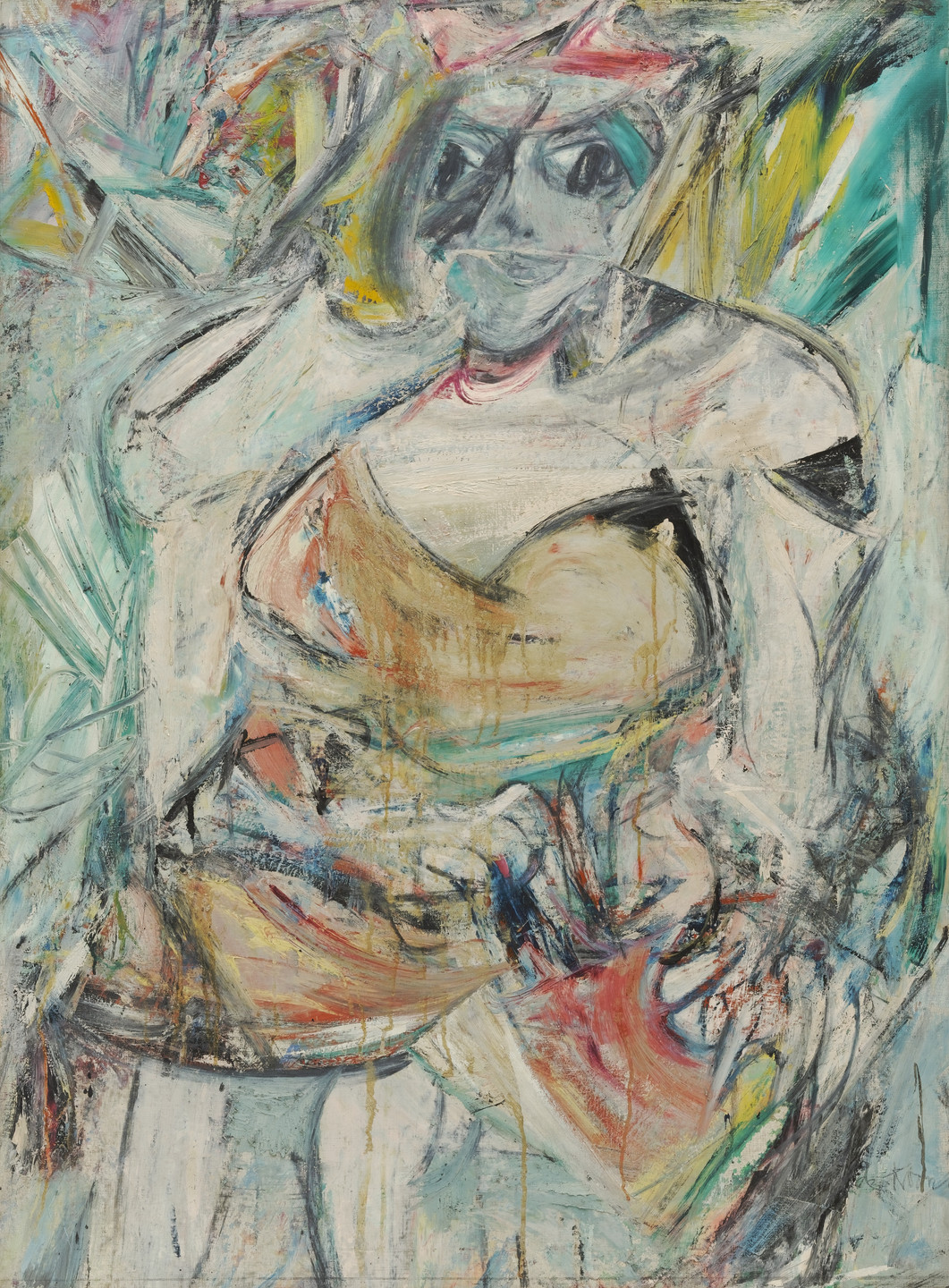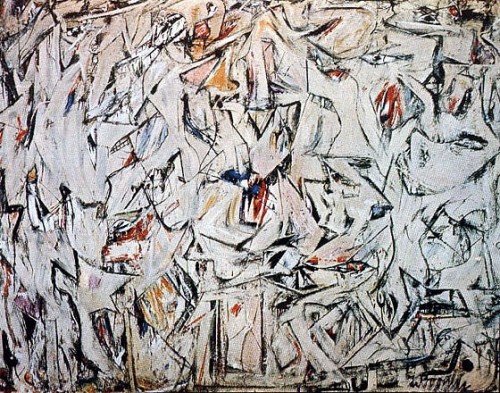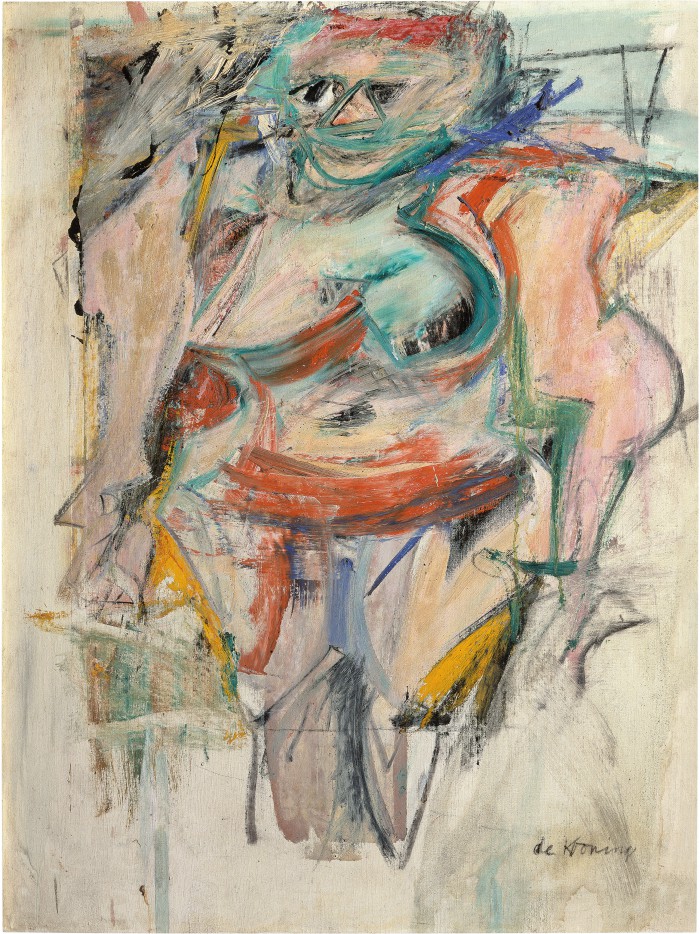

The body has irregular shape of arms and chest, and both arms are broke into two parts. He used geometric shapes, such as triangle, square, and circle, to build the female figure. There are many Abstract Expressionist elements in the painting, such as the composition, space, line, and color.īy combining simple geometric shapes, De Kooning has created a powerfully dramatic composition. A woman figure stands in the center of the painting, the proportion of the figure on the painting is two thirds. Jackson Pollock, Franz Kline, as well as Arshile Gorky are also regard as members of the New York avant-garde, with de Kooning championed as the leader of the movement. In post-World War II era, de Kooning painted in an Abstract Expressionist style, also known as Action painting, whose painterly gesturalism transcended the conventional definitions of figuration and abstraction, and he substantially influenced art after World War II, becoming one of a group of artists that came to be known as the New York School.

De Kooning’s painting contains enormous details, which allowed the viewers take time to absorb.ĭe Kooning as painter who knows the value of history, sought to understand the recent history of paintings thoroughly. The Dutch system of integrating fine and applied arts imbued in de Kooning a respect for tradition and craft that remained fundamental for his work. His exceptional talent was discovered by Jaap Gidding he decided to enroll de Kooning as a night student at the Rotterdam Academy of Fine Arts and Techniques, where he remained for eight years. De Kooning is an important artist to the museum because he brought his craft a rigorous European academic training and close familiarity with the past art of past that set him apart from many of his American contemporaries.ĭe Kooning (1904 – 1997) was a Dutch-born American painter. Considering de Kooning’s Dutch background, his paintings actually combined with more than three styles.


Hess is explaining that Abstract Expressionism is a "breakthrough" because it is a style that combines with both European art colors and American abstract forms. "…Similar themes of Pompeian color - blue, pink, ocher, alluding to the Boscoreale frescoes in the Metropolitan as well as to the Broadway neon - similar hooking forms and flickering contours, tie the works so closely together that the whole idea of a ‘breakthrough’ seems a bit juvenile - like an advertising agency’s gimmick to sell History." īoscoreale frescoes used to be an important painting technique in Roman. Hess, the longtime executive editor of ARTnews, pointed out about de Kooning’s works that The wartime shifted the artists’ perspectives of the art world from representational, single-style painting to an abstract, combination of multiple styles painting. The McCarthy era after World War II was a time of artistic censorship in the United States, but, if the subject matter were totally abstract, then it would be seen as apolitical, and, therefore, safe. After World War II, the political climate did not tolerate the social pretests of these painters any more. However, the political limitation was one of the definite reasons. The reasons why abstract expressionism took place in the 1950s are still a matter of debate.
WILLEM DE KOONING WOMAN SERIES
This painting is a good example of contemporary art’s transition from European traditional painting to abstract expressionism Woman is considered de Kooning’s most famous series because it is significant to postwar history and social events, such as the American Feminist Movement in 1960s de Kooning has a ventured impact on the issue of the representation of woman during 1950s through the abstract form and, above all, Woman VI is an irreplaceable work of art for the Postwar Abstraction collection not only for its abstract form and brushwork techniques but because it still has the ability to create multiple interpretations with each viewing.Īs decolonization spread throughout the globe, the Cold War powers offered competing models for economic and political modernization, as well as models for the art world. Willem de Kooning is a pioneer of abstract expressionism in America. The last painting of this series, Woman VI, is displayed at the Carnegie Museum of Art as part of the Postwar Abstraction collection since the 1955 Carnegie International Exhibition. In 1953, Woman, a series of abstract works of art painted by Willem de Kooning, shocked the public who visited de Kooning’s third one-man show at the Sidney Janis Gallery in Manhattan. ( April 2015) ( Learn how and when to remove this template message) See Wikipedia's guide to writing better articles for suggestions. This article's tone or style may not reflect the encyclopedic tone used on Wikipedia.


 0 kommentar(er)
0 kommentar(er)
